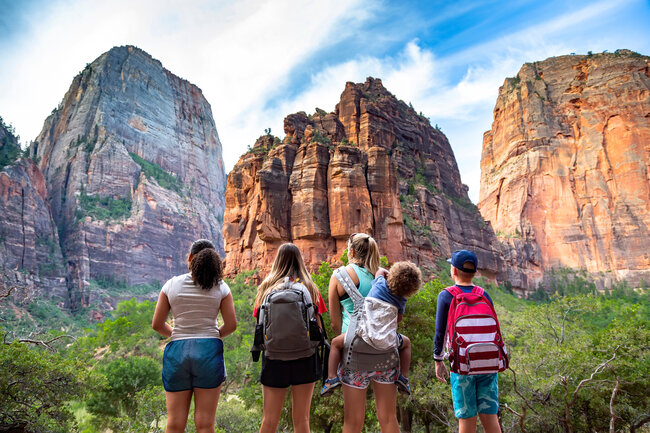
Leave No Trace: Travel Tips for Minimal Impact

Leave No Trace. Those are three very important words to remember before you head to the great outdoors for some hiking, backpacking, or camping. Leave No Trace means keeping the natural environment that you’re visiting as beautiful as it was when you got there. Here are some simple things you can do to preserve our national parks and wilderness areas and adhere to the Leave No Trace principles:
Tips for Hikers & Campers to Leave No Trace
1. Camping
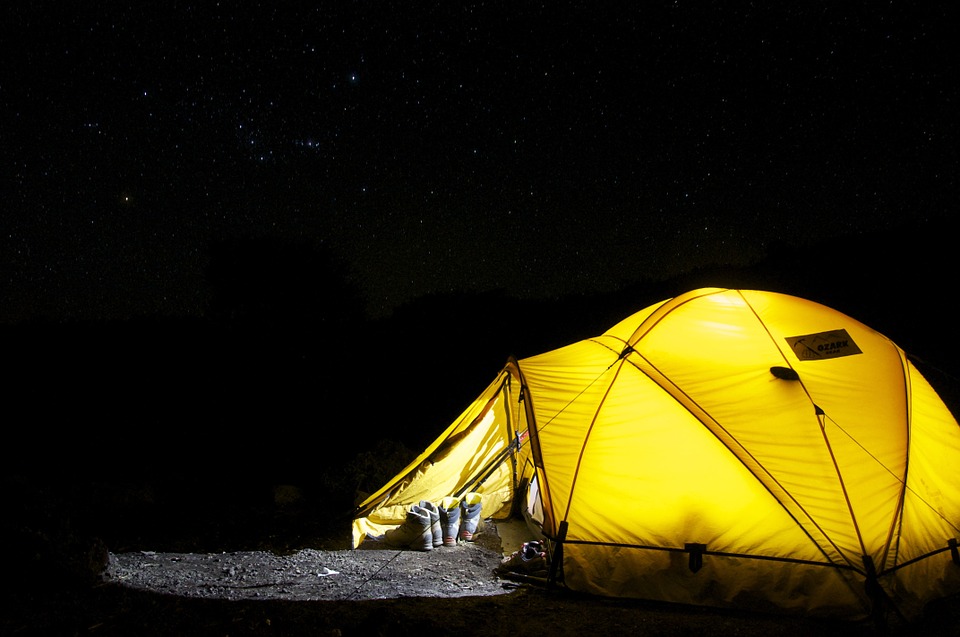 Shutterstock Image
Shutterstock Image
How to Build a Fire and Not Burn Down the Forest (or Yourself)
Let’s start with camping. The best way to leave no trace is to bring a portable stove and pot. If you’re planning to build a campfire, be sure and check on the most current regulations and alerts. Sometimes campfires are banned due to wildfire conditions.
When building a campfire, a portable campfire ring is recommended, unless you’ve done your research and know there will be rings where you’re going. Use sticks that have already fallen to the ground for firewood. Don’t break or cut branches from living trees, standing dead trees or dead-and-down trees.
Those are all homes for wildlife and insects. Build only a small fire with sticks and twigs not much larger than the diameter of an adult wrist. And don’t hack, saw, or carve into any trees.
Don't Be a Hot Mess: Tips for Extinguishing Your Fire
Make sure all wood burns completely to ash. Or use gloves to grind burned coals into ash then soak with water and scatter. Douse fires with water. Dirt may not completely extinguish a fire, which could lead to disastrous forest fires. Also, avoid building fires next to outcropping of rocks.
The black scars could last for years to come. In some instances, there may be regulations that you have to pack out your ashes. Don’t burn plastic or foil, keep fuel far away from a fire and don’t ever leave a fire unattended.
Channel Your Inner Tarzan: Setting Up Your Tent
When setting up your tent, use well-worn, durable surfaces like rock, gravel, sand or dry grass, and avoid areas with living vegetation. If there are designated campsites, please use them to ensure no additional harm to nature. And, make sure your site is at least 70 adult steps – about 200 feet – away from any body of water. This way it remains accessible to the wildlife that need to reach it.
One last note on camping. If you’re not using a popular, designated site, then when you’re breaking camp and getting ready to move on, make sure to leave the area looking like it was undisturbed.
RELATED: 10 Ways to Be a Safe and Responsible Traveler in Hawaii
2. Trash
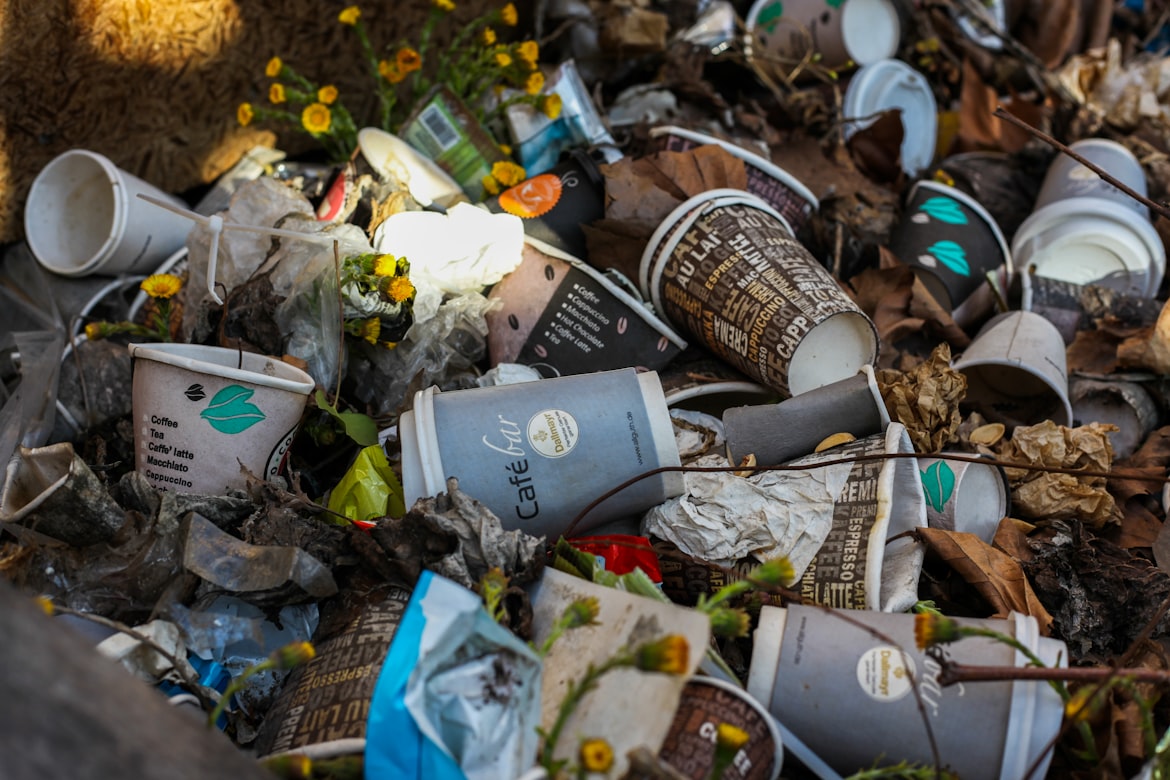
Now for some trash-talk. When you’re out in the wilderness, there may not be a garbage pail in sight. So… how exactly do you get rid of your trash? Well, the short answer is that whatever you brought with you has to stay with you. Don’t leave it behind. If you brought it in, then pack it out. Including leftover food. Don’t burn your leftovers to get rid of them.
How to Avoid Accidentally Befriending A Bear
Garbage that is half-burned or extra smelly will attract wildlife. Even bacon grease has to be packed out. When washing your cooking pot, don’t do it in a clean body of water. You don’t want your soap suds harming the water. Fill a clean pot with water, then wash your pot 200 feet away from the body of water, scattering the dirty water – after you strain it.
Don't Make Nature Smell Like Your Cologne
The same goes for washing yourself. Don’t lather up in a clean body of water. Collect fresh water in a clean pot, then scrub down and rinse off well away from the water. And before you go swimming, keep in mind that the sunscreen, insect repellent or lotions you may be wearing are not good for a freshwater lake, pond, creek or river.
Now back to your food. There are a million reasons that you should never leave any traces of food behind when you’re breaking down camp. So before you leave, search for every orange peel or pistachio shell. And don’t try burying your trash. The wildlife will laugh at you as they dig it up to dine on.
3. Wildlife
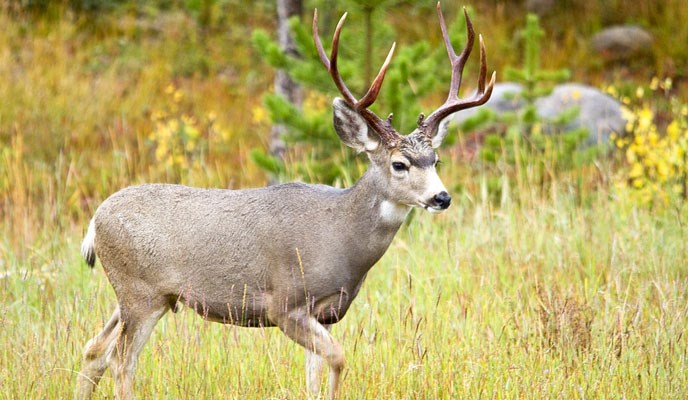 Shutterstock Image
Shutterstock Image
Speaking of wildlife, did you know that bears are attracted not only to the smell of food (they have highly attuned sniffers) but also to the smell of toiletries? Never approach an animal because it looks cute or because you want a selfie. That’s what your zoom lens is for. And don’t ever try to feed any wildlife. Hungry animals can turn aggressive. But more than that, you don’t want a wild animal to ever become dependent on human food.
You also want to protect yourself - these animals are wild. You never know how they’ll react.
RELATED: Protect Local Animals - Ways You Can Help
4. Restrooms
Now for a crappy topic: Restrooms, or lack thereof. If there’s no toilet around, you’ll have to bury all human waste in a cat hole at least 200 feet from water sources. Make sure you do it on higher ground so that nothing you ‘leave behind’ floats away with the runoff during a storm and ends up in a beautiful body of water.
5. Hiking
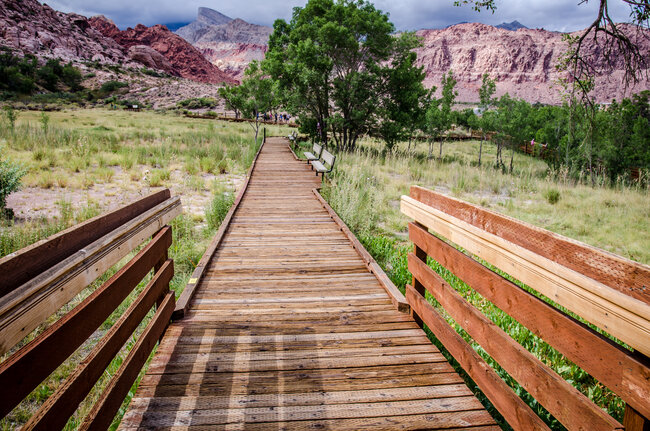 Shutterstock Image
Shutterstock Image
Now for hiking. Please stick to designated trails as often as possible. This helps to prevent erosion. But also, what looks like mere ‘dirt’ on the side of a trail is actually living soil! Trampled vegetation may not be able to regenerate for years – if ever – once it’s walked upon. The same goes for picking wildflowers! Don’t do it! Some of them may never grow back.
And watch out for puddles. What looks like just a pothole in a rock may actually contain nearly-invisible living creatures, and these miniature watering holes should also remain undisturbed for the animals that rely on it for clean drinking water.
6. Noise Pollution
Now let’s address noise pollution. Did you ever stop to think about how the volume of your voice could be disturbing others? Be respectful of those who are enjoying peace, solitude, reflection and the sounds of nature. Stop and gather members of your group from time to time, rather than yelling to them from ahead or behind them on a trail. Plus, you don’t want to stress out the wildlife with loud noises! (The exception to this is if you’re in bear country, where it’s good to give bears a heads-up that you’re approaching. You don’t want to startle a bear. )
And don’t be that dude that blasts his music. Use earbuds. Also, before loading your dog up for a hike or camping excursion, check the park’s hiking rules. In many cases, pets are not allowed on trails, or must be on a leash at all times. Plus, you’ll have to follow the same rules for packing in and out whatever your dog ‘leaves behind.’ If you’ve got a dog that barks incessantly, it’s noise pollution.
7. “Souvenirs”
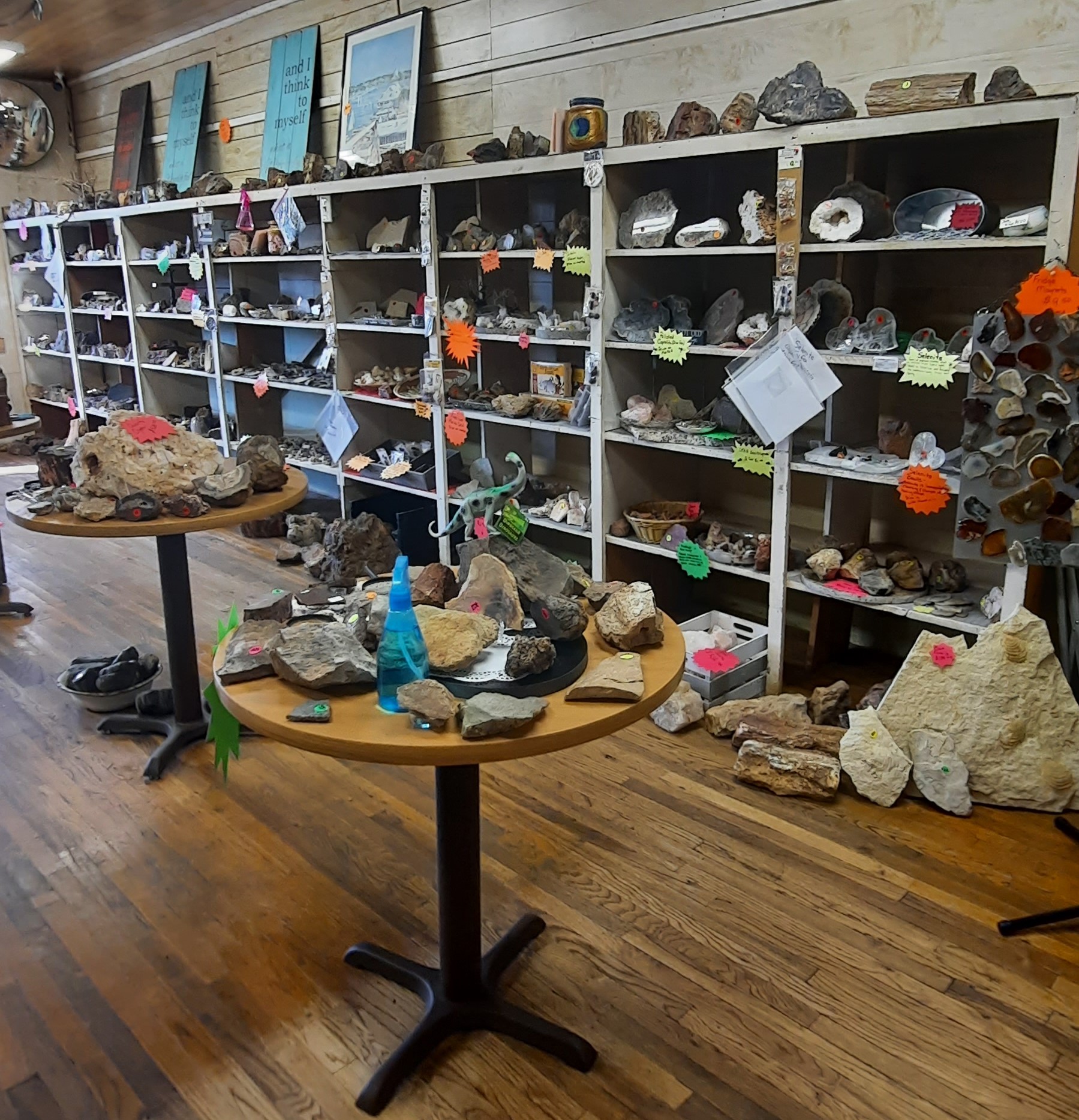
As for picking up souvenirs or mementos inside of a national park or wilderness area, stick to the gift shops. On the trails, all you should be taking … is photos. Do not remove rocks, soil, plants – anything. This is extremely disruptive, but is also considered disrespectful. Plus, you might even get on a certain goddess’ bad side.
Why is it important to Leave No Trace?
Our national parks, wilderness, recreation, and conservation areas are precious. Let’s keep these lands protected for years to come. After all, the next time you go back, you’ll want to find the land as beautiful and unspoiled as you remembered it. Now … get out there and enjoy all that nature has to offer!
For more information on this topic, visit the Leave No Trace website – this organization's mission is to educate the public about the key principles to follow when camping, backpacking, and hiking in our national parks.
Like this article? Share it on Pinterest!
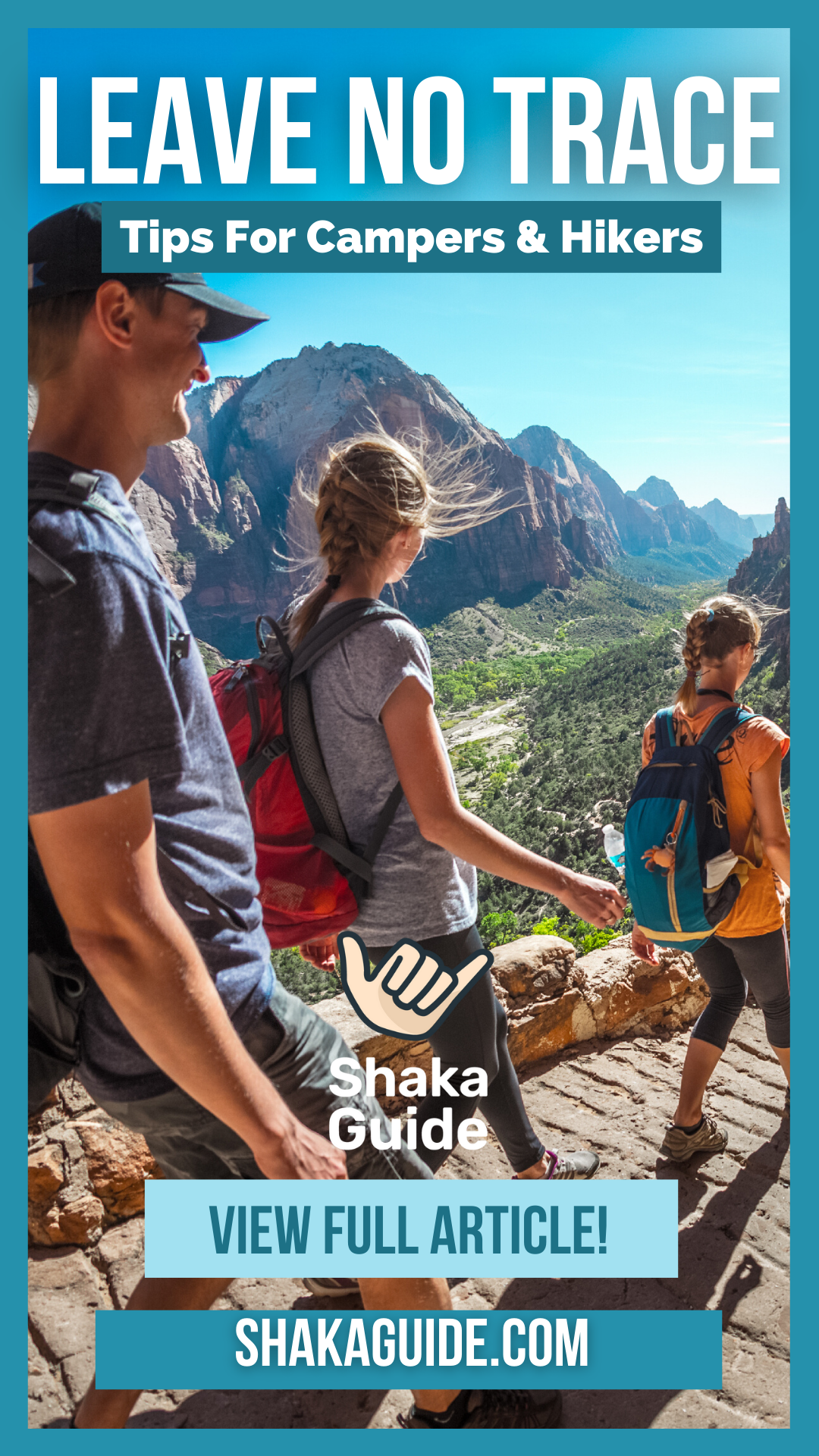
Now, are you ready to take a tour? Check out Shaka Guide's Audio Tours!




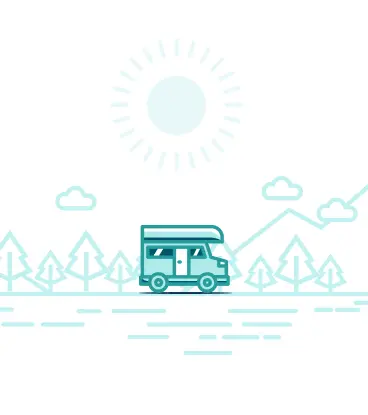


















 to fuel your ride
to fuel your ride 
